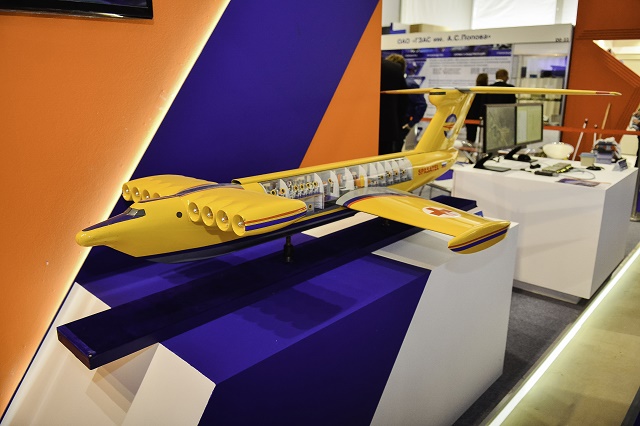The Soviet Union’s once-secretive “Caspian Sea Monster” has resurfaced at the MAKS air show, minus the stacks of short-range nuclear missiles meant to obliterate Western defences in a sea-skimming sneak attack.
The original "KM" ekranoplan – designed to travel at high speeds just 150m above the ocean on a cushion of air – was created in the mid-1960s and is arguably one of the oddest weapons to emerge during the Cold War. The "Lun-class" follow-on was outfitted with six missile tubes and entered service with the Soviet navy in the late 1980s.
But as Russian seeks to revive and modernise its one mighty aerospace industry, one design bureau see great potential reproducing the Soviet ekranoplan for passenger and cargo transport purposes.
Sergey Korolev of the Alexeyev Central Hydrofloil Design Bureau hopes the model at MAKS will renew interest in this type of ground effect vehicle, and he sees the cashed-up tourism markets of China and the Middle East as the best source of investment.
Two concepts were displayed in an animation at MAKS: One is passenger transport vehicle and the other is a high-speed patrol craft with forward-firing guns and a deployable speed boat for coastal policing or anti-piracy missions.
However, Korolev thinks it would be most sensible to pursue a 100 to 120-seat passenger ekranoplan powered by rows of turbojet or turboprop engines for speeds of 250km/h.

BillyPix
The display model would accommodate 50 passengers, but the unique ground effect that lifts the airframe at a certain speed favours larger aerofoils.
“It’s only a concept,” says Korolev, the design bureau’s product deputy general of civil works and director of marketing. “We have some vision for the civil sector, not for the army.”
He recognises that the high-technology venture won’t be an easy sell, and he gave no time frame for how long it would take to reproduce the machine – which is neither aircraft nor boat.
Plus, the bulk of the investment would need to come from industry, not the government, he says.
“Now, it’s very difficult because in Soviet times many universities and institutes worked for this project,” he explains. “With communism, everything is free and people just work. Now, it’s not possible. This is only a model, because maybe some people or visitors have some vision for this project, maybe new life.”

Russia's weaponised Lun-class ekranoplan entered service with the navy.
Wiki Commons
Russia has long been the leader in ground effect vehicles, although Boeing Phantom Works at one point had its own cargo-carrying conceptual design known as the Pelican.
By flying in just above the water, the Soviet Union believed its ekranoplans would be invisible to Western radars and could launch a barrage of missiles before being spotted.
Source: FlightGlobal.com



















